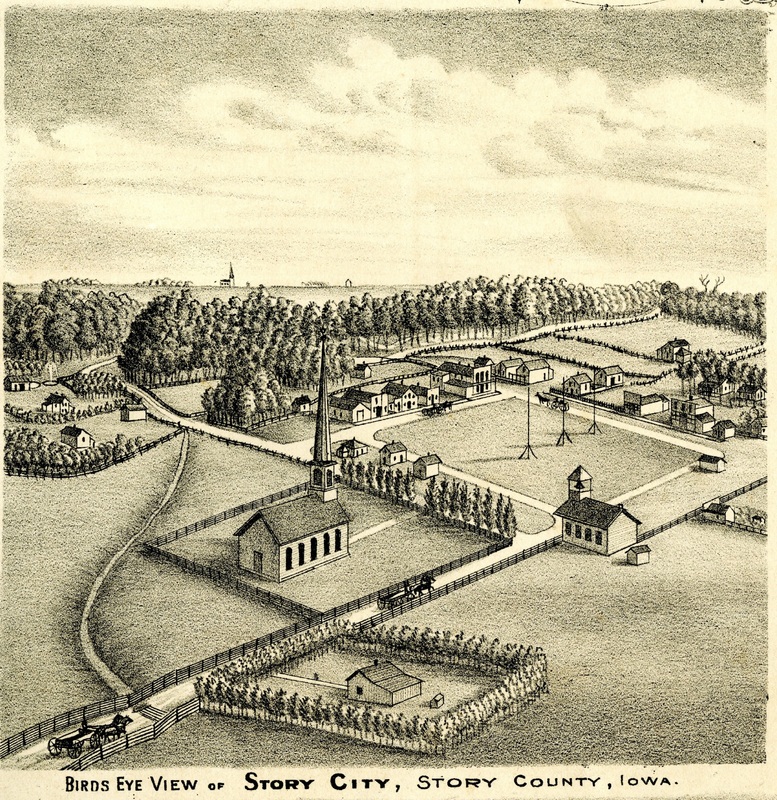 Early sketch of Story City looking southeast, taken from the Iowa 1875 State Atlas by A.T. Andreas. Early sketch of Story City looking southeast, taken from the Iowa 1875 State Atlas by A.T. Andreas. Several of the contributors in the 1940 Story City Herald Anniversary Book wrote about the early pioneer days of Lafayette Township. It’s only fitting that we start this journey of looking back at Story City’s history by starting at the beginning. Lafayette Township was organized about 1853. The first town within Lafayette Township was laid out and platted in 1855. It was comprised of 13 acres in section 12 of the township and from its beautiful, unobstructed view, was named Fairview. The promoters for the platting were D.M. Brown, George S. Prime, and George W. Sowers. Soon after Fairview was platted, Richard E. Jenness built a log house on the west street and during 1856 he built a frame building and opened a store. William Estell was next to build a frame store in 1856. F.W. Rhoades opened a business, and on Nov. 29, 1856 was commissioned postmaster. At this time the name of the town was changed to Story City as there was already another town named Fairview in the state with a post office. P.A. Olson, the editor of the 1940 Story City Herald Anniversary Book, included two accounts of the pioneer days by James F. Brown and William A. Wier, both of which were originally written in 1902. J.F. Brown and family arrived in Lafayette Township on April 13, 1856 from Crawford County, Pennsylvania. In his article, Brown describes Lafayette Township with the Skunk River running south and the Kegley Creek running southeast and emptying into the Skunk. The surface was mostly level dark prairie soil and its stiff sod was hard to break. In certain places ponds were plentiful with ducks, grouse, and game. According to Brown “the roaming Indians possessed the land.” The few pioneer neighbors were scattered along the Skunk. When Brown came to Lafayette Township land was $1.25 per acre. In 1902 when he’s writing this article, the price of land had risen to $70 and $80 per acre. William A. Wier, who would later become the first mayor of Story City, came to Lafayette Township in 1856 as well. In his 1902 article, Wier describes the new town of Fairview as having only two residents. He goes on to list around 40 other residents who lived in Lafayette Township. At this time most of the residents were from Indiana with a few from Ohio. Wier goes on to talk about money in those early days. Paper money was for the most part worthless, only gold and silver could purchase goods. A notable exception was the bills of the “Bank of Nebraska” which were commonly call B.F. Allen’s “Red Dog” money. The bank was located in Des Moines and according to Wier the paper notes were always equivalent to coin. We hope you have enjoyed this brief overview of the beginning pioneer days of Layafette Township and two first-hand accounts of the times. We've also been posting the advertisements from the 1940 Herald Anniversary Book along with additional information about the businesses on this website. Collection items relating to the 1940 businesses that advertised in the book are also being shared on the website and Facebook page. Don't forget to check back weekly for postings on the ads and collection items.
0 Comments
Your comment will be posted after it is approved.
Leave a Reply. |
AuthorKate Feil Archives
February 2023
Categories
All
|
 RSS Feed
RSS Feed
